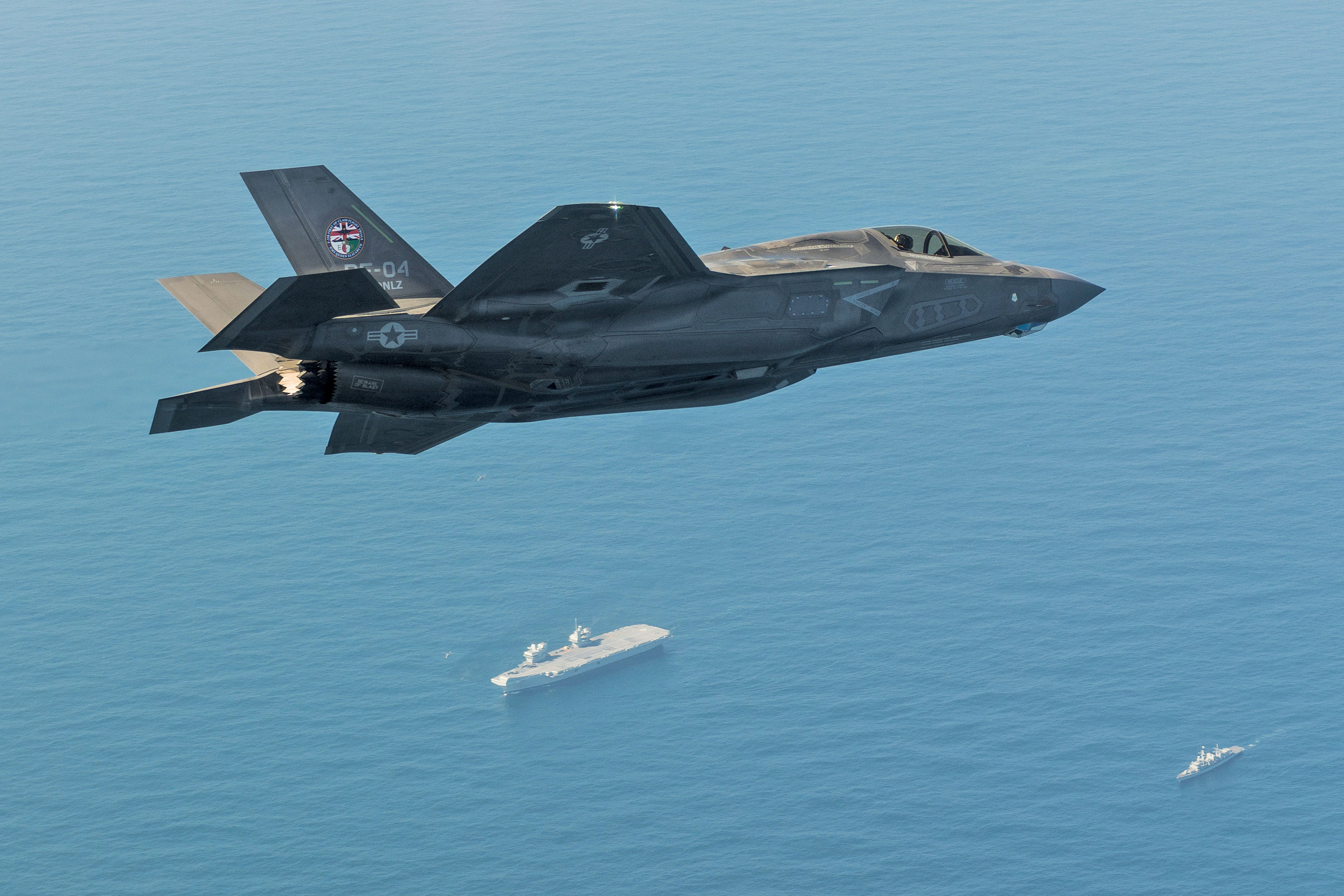
The saga of Canada’s search for a new fighter aircraft to replace the CF-188 (known as the CF-18) continued last fall when, in September, the United States granted permission to Canada to acquire 25 F-18s from the Royal Australian Air Force. U.S. permission was needed because the aircraft were built in the United States and their transfer to Canada involves U.S. technology, even though that technology is 30 years old. The jets will be based at Canadian Forces Base Cold Lake in Alberta. They will supplement the 75 or so CF-18s that Canada is still flying from its first purchase in the 1980s and keep the air force flying until the entire CF-18 fleet is replaced in the mid-2020s.
The timing was ironic. In the week that permission was granted, Britain’s Royal Navy began conducting test takeoffs and landings with one of its new F-35s from the deck of the new aircraft carrier HMS Queen Elizabeth, now undergoing sea trials. It is the first of its two new 65,000-tonne carriers. Not long after, a Marine Corps F-35B (Short Takeoff and Vertical Landing) carried out a first attack on a ground target in Afghanistan. The U.S. military, including a Marine Corps squadron, is now flying about 350 F-35s. Israel is flying F-35s operationally and 11 other nations have ordered or are beginning to receive them, including Australia, which will replace its F-18s with them.
The story of the F-35 is a long one, beginning with first proposals in the 1990s for an aircraft that did not exist. Many of the specifications laid down by the U.S. Air Force, Marine Corps and Navy were in the realm of fantasy, not to mention those of other partners in the program, such as the United Kingdom. Technical problems abounded and costs ballooned. It is the most expensive fighter ever built by far, even though the unit cost is declining as more and more aircraft are delivered.
Canada bought into the F-35 project from the beginning because as a partner nation, Canadian industry was able to gain contracts to produce parts for the aircraft. That meant Canadian jobs and sharing of advanced technology. Both the Chretien/Martin and Harper governments were going to purchase 65 aircraft. But with a little fiddling of the numbers as to the total cost of the aircraft, the Tory purchase ground to a halt soon after it was announced in 2010. The Canadian media had a field day deriding the jet and making claims that it was a flying turkey that would never achieve the high expectations predicted for it.

The F-35, in the meantime, continued to develop, although not steadily, as is the case with most new aircraft. Two orders were issued by the United States, one in 2017 and one in October, to ground virtually all the aircraft to solve a technical problem with the engine, the cause of an F-35 crash in the United States. But no partner nation has backed out because, quite simply, there is no alternative. The U.S. decided a long time ago that the F-35 was going to work, come hell or high water, and bet the house on the aircraft.
What many journalists failed to understand, especially in Canada, was that the development of a new aircraft is always plagued with problems. From the old Ford Trimotor, which carried passengers in the late 1920s, to today, early and often fatal problems plague production. Failures are far rarer today than in, say, the Second World War, because high-speed computing allows potential technical problems to be solved long before a production aircraft appears. But zero failures are practically impossible.
The U.S. spent as much money developing the B-29 bomber in the Second World War as it did on the atomic bomb itself, but the aircraft was plagued with engine fires long after it had gone operational. The much-vaunted F-22 Raptor—often called the most advanced fighter in the world—had problems with its oxygen system, which seriously impeded pilot performance until just a few years ago.
The cost of the F-35 and the problems it encountered in production are simply not an excuse for the government to continue to follow a procurement process which will take at least another three years just to decide which aircraft to order. Yet this grindingly slow process continues.
It is worthwhile to compare the new fighter process with the acquisition of the new (and now finally operational) Sikorsky CH-148 Cyclone maritime helicopter. Despite continued delays and ongoing technical problems, the government never wavered on acquiring this aircraft. Today, well over budget and long past its original acquisition date, the aircraft is flying. Having wasted millions of dollars by cancelling the purchase of the EH-101 in 1993, the government could hardly have done otherwise.
Advertisement














